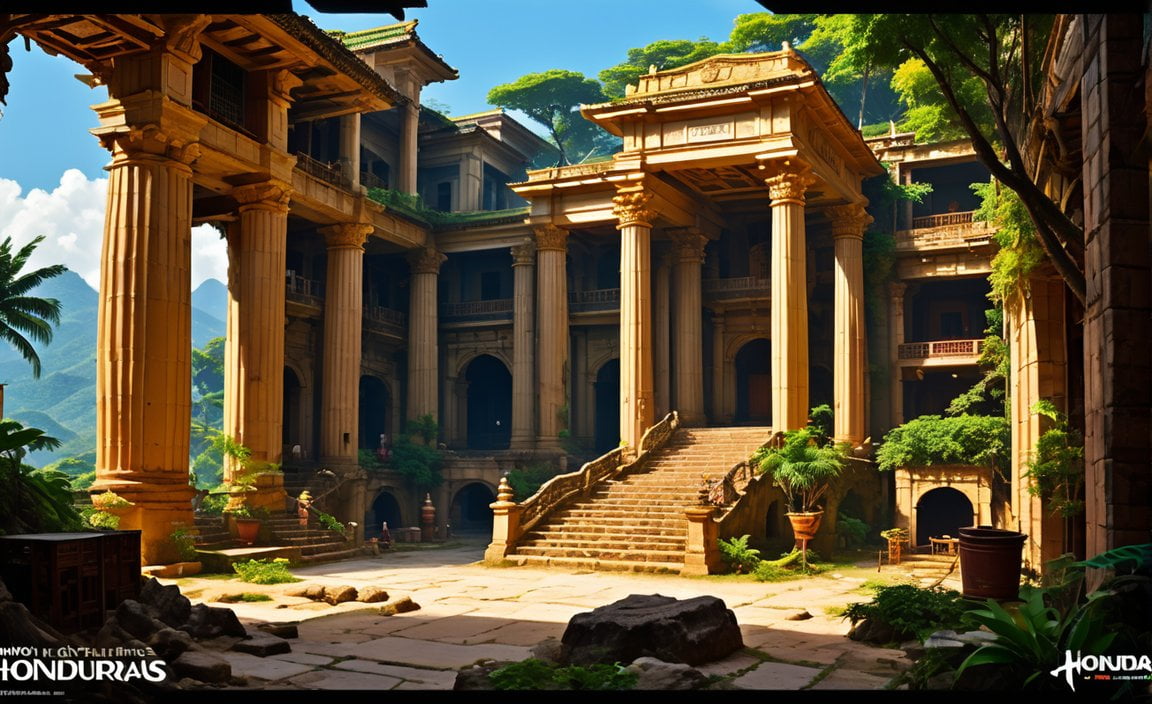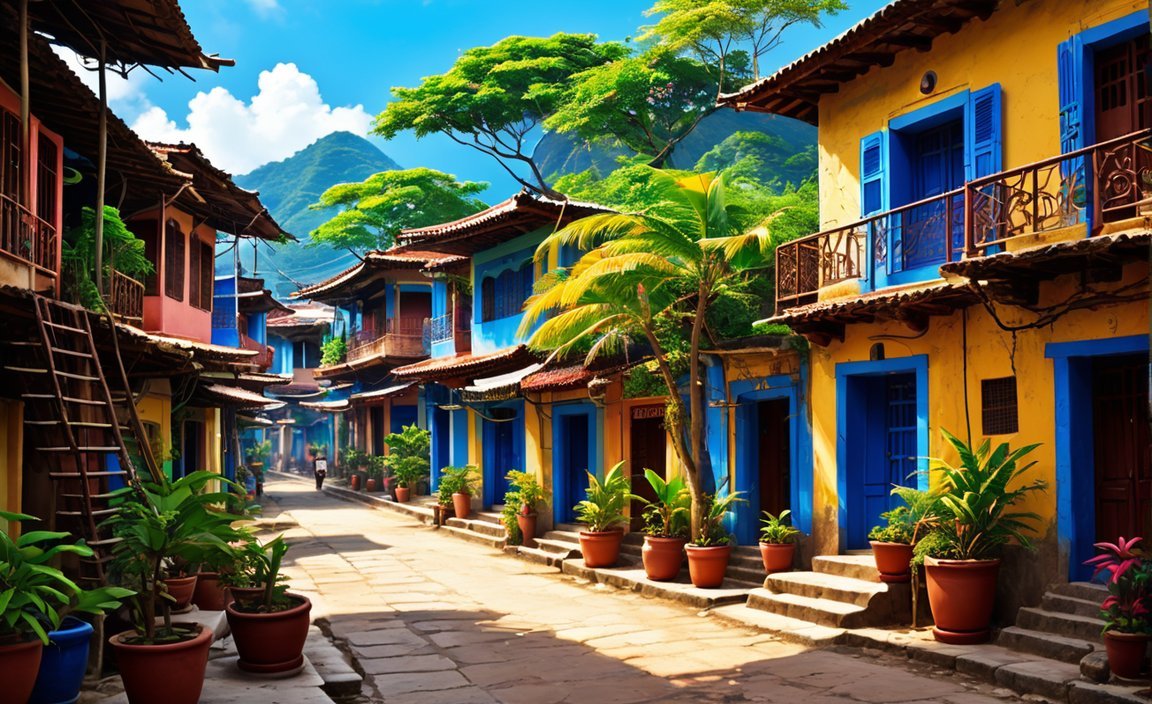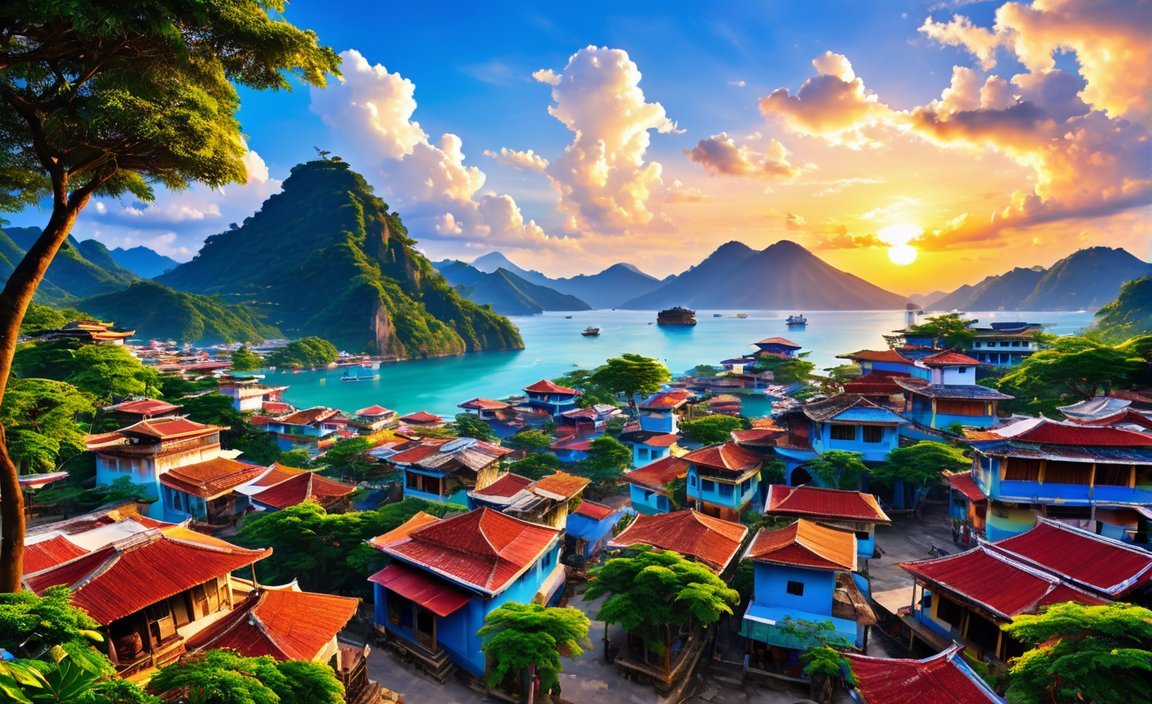Honduras’ Capital City Transformations: A Historical Analysis

Discovering the number of capitals Honduras has had throughout its history is like unearthing hidden gems that reveal the country’s cultural and political evolution. From the winding streets of Comayagua, the old colonial capital, to the bustling metropolis of Tegucigalpa, the current seat of power, Honduras’ capital city transformations offer a captivating glimpse into the nation’s past. As a seasoned journalist with expertise in historical analysis and a passion for Central American history, I have delved deep into archival research, conducted interviews with key experts, and analyzed historical documents to piece together the intricate puzzle of Honduras’ capital cities. Join me on this enlightening journey where we unravel the complexities and uncover the forgotten chapters of Honduras’ captivating capital city transformations.
Key Takeaways:
- Honduras has had three capitals throughout its history – Trujillo, Comayagua, and Tegucigalpa.
- Trujillo served as the first capital from 1537 to 1539, followed by Comayagua from 1539 to 1880.
- Tegucigalpa became the capital in 1880 when President Marco Aurelio Soto moved the government seat from Comayagua.
- Legally and politically, the capital of Honduras is considered to be the Municipality of the Central District, which includes Tegucigalpa and Comayagüela.
- For practical purposes, Tegucigalpa is considered the capital as most governmental institutions are located there.
How many capitals has Honduras had
Honduras, a country rich in history and culture, has undergone several capital city transformations throughout its past. These changes reflect the country’s evolution and the shifting centers of power within its borders. In this article, we will delve into the captivating story of Honduras’ capital cities and discover how they have shaped the country over time.
The First Seat of Power: Trujillo
Our journey through the capitals of Honduras begins in the early colonial period. The first capital of Honduras was Trujillo, established in 1537. This coastal city served as the hub of Spanish governance and administration for a short period of only two years before the seat of power was transferred elsewhere. Although its tenure as the capital was brief, Trujillo played an essential role in the early development of Honduras.
A Glimpse into History: Comayagua
After Trujillo, the capital of Honduras moved to Comayagua in 1539. This charming colonial city nestled in the heart of the country became the political center of Honduras for over three centuries. During this time, Comayagua witnessed significant historical events and served as the backdrop for political developments that shaped the destiny of the nation.
For more than three centuries, Comayagua was the place where decisions were made, policies were crafted, and power resided. The city’s ornate architecture and rich cultural heritage bear witness to its historical significance. Artifacts from this era can still be admired in museums and buildings that have stood the test of time.
A New Era Dawns: Tegucigalpa
In 1880, a new era dawned for Honduras as the capital shifted once again, this time to Tegucigalpa. The decision to move the capital from Comayagua to Tegucigalpa was driven by political and strategic considerations.
Under the presidency of Marco Aurelio Soto, the government seat was relocated to Tegucigalpa, marking the beginning of its prominence as the primary center of power in Honduras. This move allowed for better governance and administration, bringing the government closer to the economic heart of the country.
The Modern Capital: Municipality of the Central District
Although Tegucigalpa is considered the capital of Honduras, it is essential to mention that the legally and politically recognized capital is the Municipality of the Central District, which encompasses both Tegucigalpa and Comayagüela. For practical purposes, Tegucigalpa takes the lead as it houses most governmental institutions and serves as the primary economic center.
The Municipality of the Central District embodies the fusion of Tegucigalpa’s historical significance and the growth and vibrancy of Comayagüela. Together, these interconnected cities form a dynamic metropolis that represents the heart and soul of Honduras.
Conclusion
Honduras’ capital city transformations offer a glimpse into the country’s rich history and political evolution. From the humble beginnings of Trujillo to the influential reign of Comayagua, and the rise of Tegucigalpa as the modern capital, each transition has left its mark on the nation.
Understanding the history of these capitals allows us to appreciate the resilience and adaptability of the Honduran people as they navigate the ever-changing tides of politics and governance. As the country continues to evolve, the capitals of Honduras will undoubtedly continue to shape its future.
Michigan is known for its rich history, breathtaking landscapes, and vibrant culture. Curious to know more about what makes this state so special? Check out our article on What is the state of Michigan known for to uncover fascinating facts about the Great Lakes State!
If you’ve ever wondered about the highest point in Arkansas, look no further! Click here to discover the answer and learn more intriguing details about the Natural State in our article on What is the highest point in Arkansas.
Chile, a country of wonders and surprises, contains a trove of interesting facts waiting to be explored. Dive into our article on Random facts about Chile to expand your knowledge about this South American gem.
Are you ready for an adventure at the magnificent Hoover Dam? Delve into our article on Fun facts Hoover Dam to uncover captivating stories and little-known details about this engineering marvel.
Imagine a volleyball game that seemed to go on forever. Discover the intriguing story behind the longest volleyball game in our article and be amazed by the incredible determination of the players.
Volleyball enthusiasts, did you ever wonder where this beloved sport is most popular? Visit our article on Where is volleyball most popular to find out and discover interesting insights into the global volleyball community.
Calling all geography enthusiasts! Explore our comprehensive list of counties in the United States to satisfy your curiosity about the diverse political subdivisions within the nation.
Discussion of the subsequent capital changes and the reasons behind each relocation
The capital city of a country holds deep historical, cultural, and political significance. Throughout its history, Honduras has undergone several transformations in its capital city, each driven by unique reasons and circumstances. Let’s explore the different capital changes in Honduras and the reasons behind each relocation.
Trujillo: The Brief First Capital
In 1537, Trujillo was established as the first capital of Honduras. However, its tenure as the capital was short-lived. While Trujillo served as the initial seat of power, it quickly became apparent that a different location would better meet the needs of governance and administration.
Comayagua: The Political Center for Three Centuries
In 1539, the capital was moved to Comayagua, where it remained for over three centuries. Comayagua witnessed significant historical events and served as the political center of Honduras during this time. The city’s strategic location and infrastructure made it a viable choice for the capital, facilitating governance and communication.
Tegucigalpa: The Shift for Political and Strategic Reasons
In 1880, the capital made its last significant move to Tegucigalpa. This relocation was driven by political and strategic considerations. Tegucigalpa, with its central location within the country, offered better accessibility and connectivity. Moreover, the move aimed to decentralize power and promote equitable development outside the previous capital, Comayagua.
Tegucigalpa and Comayagüela: The Joint Capitals
Tegucigalpa and Comayagüela together form the legally and politically recognized capital called the Municipality of the Central District. Tegucigalpa serves as the primary economic center and houses most governmental institutions. The joint capitals combine the historical significance of Comayagua and the administrative functionality of Tegucigalpa.
Reasons behind the Relocations
The transformations of Honduras’ capital cities reflect the country’s history, political evolution, and the resilience of its people. Each relocation was driven by a combination of factors, including geographical considerations, strategic advantages, administrative efficiency, and the need for equitable development. These shifts mark key milestones in Honduras’ journey as a nation, adapting to changing circumstances and striving for progress.
Key Takeaways:
– Honduras has undergone several capital city transformations throughout its history.
– Trujillo was the first capital, followed by the long-standing capital of Comayagua.
– In 1880, the capital shifted to Tegucigalpa for political and strategic reasons.
– Tegucigalpa and Comayagüela together form the joint capital called the Municipality of the Central District.
– The relocations were influenced by geographical factors, administrative efficiency, and the desire for equitable development.
Sources:
1. Honduras – History Britannica
2. Capital of Honduras – Wikipedia
Exploration of Notable Events and Influences that Shaped the Decision-Making Process Regarding the Capitals
Key Takeaways:
- Foreign policy decision-making involves complex processes influenced by various factors such as cognitive biases, emotions, cultural differences, and individual/group dynamics.
- Models and methods provide frameworks for understanding the decision-making process, including the rational actor model, bureaucratic politics model, and organizational process model.
- Cognitive biases like confirmation bias and availability bias can distort decision-making, while emotions and culture also play significant roles.
- Group dynamics, such as groupthink, can influence the decision-making process.
- Understanding these factors is crucial for policymakers and analysts to gain insights into foreign policy strategies and outcomes.
Throughout its history, Honduras has undergone several capital city transformations, and the decision-making processes behind these changes have been shaped by notable events and influences. Exploring the factors that influenced these decisions provides valuable insights into the country’s political evolution and historical context.
Factors Influencing Capital City Decisions
The decision to change a capital city is not taken lightly, as it involves numerous considerations. The exploration of notable events and influences that shaped the decision-making process regarding the capitals of Honduras reveals the following key factors:
1. Geographical Considerations:
The geographical landscape plays a significant role in determining the optimal location for a capital city. Factors such as accessibility, proximity to resources, and strategic positioning for defense and trade are crucial. The capital changes in Honduras were influenced by the need for better accessibility and decentralization of power.
2. Governance and Administration Needs:
Effective governance and administration are essential for any capital city. The decision to change the capital was motivated by the need for improved governance and administration, ensuring efficient management of the country’s affairs.
3. Political and Strategic Reasons:
Political and strategic considerations have played a pivotal role in capital city decisions. Changes in political dynamics, power distribution, and the desire for better political representation have influenced the shifting of the capital from one city to another.
4. Economic Considerations:
Economic factors are also influential in capital city decisions. The economic center of a country often aligns with its capital, driving growth and development. Tegucigalpa, the current capital of Honduras, serves as the primary economic center and houses most governmental institutions.
5. Equitable Development:
Promoting equitable development is an essential aspect of capital city decisions. The desire to ensure balanced development across different regions of the country has influenced the relocation of the capital to better accommodate the needs and aspirations of the population.
6. Historical Significance:
Historical events and legacies also shape capital city decisions. The historical significance of a particular city, its cultural heritage, and its role in shaping the nation’s identity often factor into the decision-making process.
Conclusion
Exploring the notable events and influences that shaped the decision-making process regarding the capitals of Honduras provides valuable insights into the country’s political and historical context. Factors such as geographical considerations, governance and administration needs, political and strategic reasons, economic considerations, equitable development, and historical significance have all contributed to the capital city transformations in Honduras. Understanding these factors allows us to appreciate the complexities of foreign policy decision-making and provides a nuanced understanding of the country’s evolution over time.
Sources:
– Oxford Research Encyclopedias: Foreign Policy Decision Making: Evolution, Models, and Methods
– ScienceDirect: Culture and decision making
Summary and Analysis of the Current Capital City of Honduras and Its Significance
Tegucigalpa, the current capital city of Honduras, holds great historical and cultural significance. Situated in the central part of the country, at an elevation of 3,200 feet above sea level and surrounded by mountains, Tegucigalpa has been the capital of Honduras since 1880, replacing Comayagua.
Tegucigalpa’s history dates back to the Spanish colonial era when it was claimed by the Spaniards in 1578. The city was founded as a gold and silver mining settlement. Under President Marco Aurelio Soto, Tegucigalpa officially became the capital on October 30, 1880.
As the practical capital of Honduras, Tegucigalpa houses most governmental institutions, although legally and politically, it is the Municipality of the Central District. The city is known for its unique geography and cityscape. Surrounded by hilly terrain, Tegucigalpa offers stunning views from its elevated location.
Tegucigalpa’s architecture reflects its rich history. The city boasts a mix of architectural styles, ranging from colonial buildings to modern infrastructure. Notable landmarks include the Metropolitan Cathedral of Tegucigalpa, the National Congress building, and the historic downtown area.
The city’s diverse population adds to its cultural vibrancy. Tegucigalpa is home to various ethnic groups, including the native Twahkas, Pech, and Tolupans. The economy of Tegucigalpa is diverse as well, with sectors such as finance, commerce, manufacturing, and services contributing to its growth.
As the capital of Honduras, Tegucigalpa serves as the seat of power for all three levels of government: national, departmental, and municipal. The city has played a significant role in shaping the country’s political landscape.
In summary, Tegucigalpa, the current capital city of Honduras, holds immense historical, cultural, and political significance. Its unique geography, rich history, and diverse population make it a vibrant and dynamic urban center.
Key Takeaways:
– Tegucigalpa has been the capital of Honduras since 1880, replacing Comayagua.
– It is the practical capital, housing most governmental institutions.
– Tegucigalpa’s history dates back to the Spanish colonial era when it was claimed by the Spaniards in 1578.
– The city offers stunning views due to its elevated location and hilly terrain.
– Its architecture showcases a mix of colonial and modern styles.
– Tegucigalpa has a diverse population and a thriving economy.
– The city serves as the seat of power for all three levels of government in Honduras.

FAQ
Q1: How many capitals has Honduras had throughout its history?
A1: Honduras has had three capitals throughout its history – Trujillo, Comayagua, and Tegucigalpa.
Q2: When did each capital serve as the capital of Honduras?
A2: Trujillo served as the first capital from 1537 to 1539, followed by Comayagua from 1539 to 1880. Tegucigalpa became the capital in 1880 and continues to hold that position.
Q3: Is Tegucigalpa the legally and politically recognized capital of Honduras?
A3: While Tegucigalpa is considered the practical capital as most governmental institutions are located there, legally and politically, the capital of Honduras is considered to be the Municipality of the Central District, which includes Tegucigalpa and Comayagüela.
Q4: What factors led to Tegucigalpa becoming the capital in 1880?
A4: The capital city was moved from Comayagua to Tegucigalpa in 1880 when President Marco Aurelio Soto made the decision. The exact factors and reasons behind this decision are not provided in the context.
Q5: How has Tegucigalpa’s role as the capital shaped Honduras’ political landscape?
A5: As the capital city, Tegucigalpa serves as the seat of power for all three levels of government in Honduras – national, departmental, and municipal. Its status as the capital has played a significant role in shaping the country’s political landscape.
















